AT HOME WITH ERNIE PYLE

At HOME with
ERNIE PYLE
ERNIE PYLE
Edited and with an Introduction by
OWEN V. JOHNSON

This book is a publication of
Indiana University Press
Office of Scholarly Publishing
Herman B Wells Library 350
1320 East 10th Street
Bloomington, Indiana 47405 USA
iupress.indiana.edu
2016 by Owen V. Johnson
All rights reserved
No part of this book may be reproduced or utilized in any form or by any means, electronic or mechanical, including photocopying and recording, or by any information storage and retrieval system, without permission in writing from the publisher. The Association of American University Presses Resolution on Permissions constitutes the only exception to this prohibition.
The paper used in this publication meets the minimum requirements of the American National Standard for Information SciencesPermanence of Paper for Printed Library Materials, ANSI Z39.481992.
Manufactured in the United States of America
Library of Congress Cataloging-in-Publication Data
Pyle, Ernie, 19001945.
[Works. Selections]
At home with Ernie Pyle / Ernie Pyle ; edited and with an introduction by Owen V. Johnson.
pages cm
Includes bibliographical references and index.
ISBN 978-0-253-01905-9 (cloth : alk. paper) ISBN 978-0-253-01911-0 (ebook) 1. IndianaDescription and travel. 2. IndianaSocial life and customs20th centuryAnecdotes. 3. Pyle, Ernie, 19001945Homes and hauntsIndiana. I. Johnson, Owen V., editor. II. Title.
F530.P95 2016
917.72dc23
2015022335
1 2 3 4 5 21 20 19 18 17 16
TO EVA & HANA,
who grew up as Hoosiers
CONTENTS
ACKNOWLEDGMENTS
 An uncounted number of people have helped me in the dozen years that I have been conducting research on Ernie Pyle. On this project the most important assistant has been Emily Ehmer, now a faculty member at Texas State University, who as an Indiana University (IU) doctoral student in journalism spent a semester working as my research assistant, identifying most of the columns or parts of columns by Ernie Pyle in which he wrote about Indiana and its people. This was not an easy task because despite the lasting popularity of Pyles writings, his work has never been fully indexed and cataloged.
An uncounted number of people have helped me in the dozen years that I have been conducting research on Ernie Pyle. On this project the most important assistant has been Emily Ehmer, now a faculty member at Texas State University, who as an Indiana University (IU) doctoral student in journalism spent a semester working as my research assistant, identifying most of the columns or parts of columns by Ernie Pyle in which he wrote about Indiana and its people. This was not an easy task because despite the lasting popularity of Pyles writings, his work has never been fully indexed and cataloged.
The Indiana University Archive and the Lilly Library at Indiana University responded to numerous requests for information and material over the years, particularly Phil Bantin, the director, and Dina Kellams, his successor, at the IU Archive and Zach Downey and the now joyfully retired Becky Cape at the Lilly. Most of the originals of the columns in this book are found in the Lilly. Numerous people at the Ernie Pyle World War II Museum in Dana, Indiana, and its associated Friends of Ernie Pyle, have provided me with wonderful support for a number of years while they fought battles to keep the museum alive. More recently, the Ernie Pyle Legacy Foundation, an organization of Pyles family, has provided significant encouragement.
I am grateful to the Scripps-Howard Foundation, one of whose objectives is to keep alive the legacy of Ernie Pyle and his writings, for giving its blessing to this undertaking.
For seven years the students in my class In the Footsteps of Ernie Pyle shared with me their excitement and their ideas, which surely have contributed to my understanding of Pyle. Thanks also to the various members of the families of Ernie Pyle and Jerry Pyle, with whom I have had contact over the years. Thanks are due also to the World Wide Web, without whose assistance much of the background information would have been much harder to find.
A number of my former colleagues, now like me retired, have encouraged me in my writings about Pyle, most notably Trevor Brown, David Nord, David Weaver, and Steve Raymer, who also provided the editors picture. Sarah Hann, a former student in Ernie Pyle Hall, assisted magnificently with the editing of the introduction. Sarah Jacobi and Michelle Sybert led the team at IU Press that processed this book to publication.
Over the years many myths about Ernie Pyle and his writing have grown up. It has been fascinating unpeeling some of these myths, using his own writing to do so. We are only beginning to understand Ernie Pyle.
AT HOME WITH ERNIE PYLE
INTRODUCTION
Owen V. Johnson
 Ernie Pyle is an Indiana icon. He is the best-known journalist ever produced in the state and was the most famous American war correspondent during World War II. His columns defined readers and soldiers understanding of that great conflict. He was not a reporter in the strict sense of the term but a columnist who sketched word pictures when newspapers were far less visual. He was an experienced observer and a skilled writer, which together made him a master craftsman.
Ernie Pyle is an Indiana icon. He is the best-known journalist ever produced in the state and was the most famous American war correspondent during World War II. His columns defined readers and soldiers understanding of that great conflict. He was not a reporter in the strict sense of the term but a columnist who sketched word pictures when newspapers were far less visual. He was an experienced observer and a skilled writer, which together made him a master craftsman.
Ernie Pyle hardly ever talked about his work or even more rarely analyzed it. Interviews with him usually produced little more than generalities. Yet he was a complete journalist with an insatiable curiosity. Pyles thought was in his columns, Arthur Miller observed. The best of Pyles columns have been gathered together in several books over the years, but none has ever concentrated on a single subject except for selected columns about the Southwest.
This book focuses on Ernie Pyle as a Hoosier. It includes all the columns he wrote when he was in Indiana, as well as his writings about the state and its people when he was not there. Some columns are famous and well written; some are not and have not been reprinted since their original publication. Together they tell us about his family and about the lives of people in and from the state. More than one might have expected, Pyle found Hoosiers in other places, so much that he noticed it. These columns and Pyles life mirror Indianas change from a primarily rural, agrarian society to a modern, industrial one. They are important because Pyle grew up in Indiana, found his standard there, His readers noticed. Indiana playwright George Ade told Pyle when he came to visit that he had been reading his columns. You find Hoosiers no matter where you go, dont you? Surely, that common bond helped relax his subjects when he interviewed them.
Ernie is inordinately proud of his native state, Herb Eller reported in 1940, but he doesnt care a great deal for the middle-west. Yet while the topics in this book are connected with Indiana, Pyles outlook reflects broader midwestern and smalltown attitudes and values generally and helps us understand the America of his time.
Part of the reason he wrote so much about Indiana is that his parents and some of his friends still lived in the small western Indiana town of Dana, where Pyle was born and which he visited about once a year. Im pretty smart in making my bosses believe I have to come to Indiana a couple of times a year to get some certain story, when Im really just going up north of Terre Haute to see my folks, he joked. (That way, you see, I get my expenses paid.)
Dana and its inhabitants became the inspiration for a number of columns in this book. He gave us intimate portraits of the members of his family. He wrote about how the people in Dana helped each other and how the building of an ammunition plant north of town forced people who lived there to leave their houses and go somewhere else. He even wrote about the town crazy. In these columns about Dana, Pyle shared stories about himself and about the experiences and people that formed him. Those columns provide virtually the only evidence we have of Pyles youth. Pyle recognized that Dana had changed, that it wasnt the same place he grew up. Creeks change, too, like people, he wrote on a visit to Dana in June 1936.
Next page

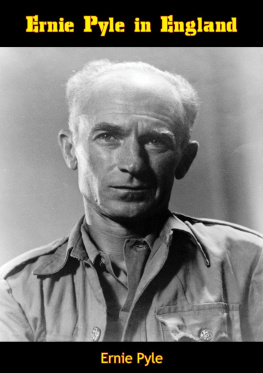
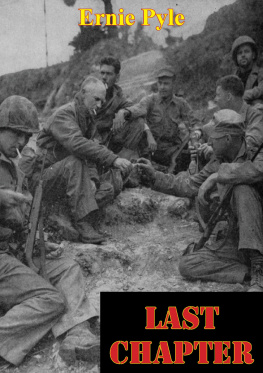
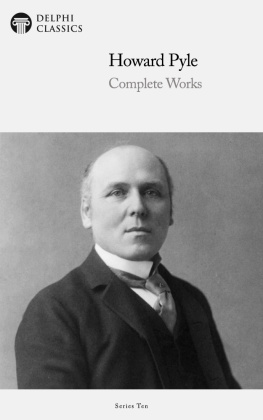

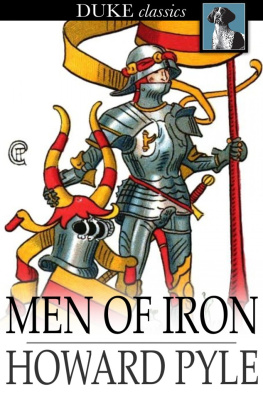





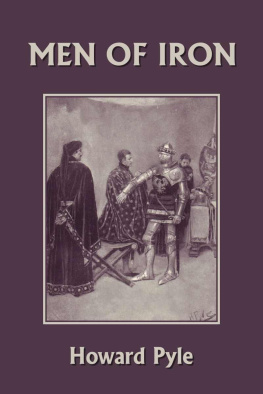


 An uncounted number of people have helped me in the dozen years that I have been conducting research on Ernie Pyle. On this project the most important assistant has been Emily Ehmer, now a faculty member at Texas State University, who as an Indiana University (IU) doctoral student in journalism spent a semester working as my research assistant, identifying most of the columns or parts of columns by Ernie Pyle in which he wrote about Indiana and its people. This was not an easy task because despite the lasting popularity of Pyles writings, his work has never been fully indexed and cataloged.
An uncounted number of people have helped me in the dozen years that I have been conducting research on Ernie Pyle. On this project the most important assistant has been Emily Ehmer, now a faculty member at Texas State University, who as an Indiana University (IU) doctoral student in journalism spent a semester working as my research assistant, identifying most of the columns or parts of columns by Ernie Pyle in which he wrote about Indiana and its people. This was not an easy task because despite the lasting popularity of Pyles writings, his work has never been fully indexed and cataloged.